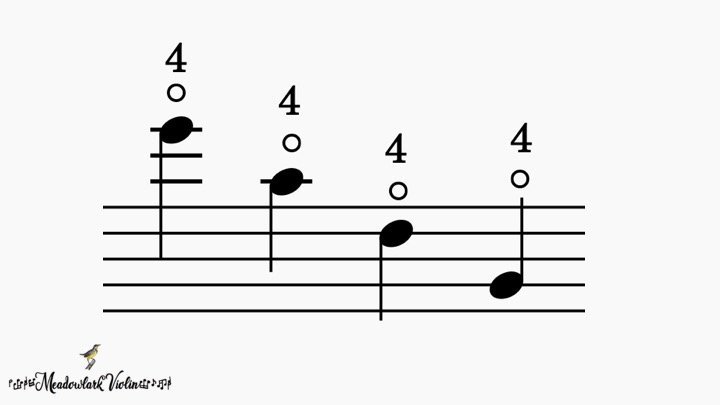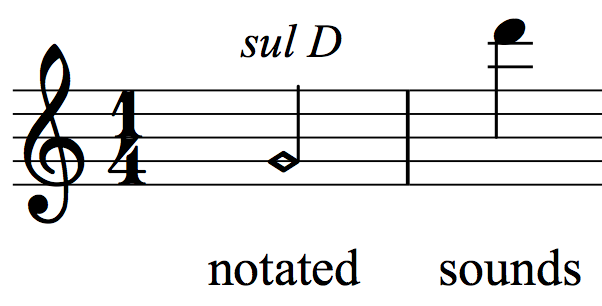Harmonics
Harmonics are sound waves that are related to the sound wave of the string in whole number integers. More simply put, harmonics cut the string into even pieces. There are two types of harmonics: natural harmonics and artificial harmonics.
Natural harmonics are those that naturally occur on the instrument. Natural harmonics can be played with any finger, but fourth finger is the most common. To play a natural harmonic, straighten the finger out and lightly lay the pad of the finger on the string. Do not press the string down at all. Use a very fast bow speed so that the harmonic speaks.
There are two times that you would play a natural harmonic: when it’s notated and when it’s convenient. Harmonics can be notated with a 4 and 0 above the note as shown below .
Or as a diamond shape as shown below.
Using harmonics sometimes prevents the player from needing to shift, which is helpful in very fast passages. Harmonics also ensure that the note is in tune (because if it wasn’t, the harmonic wouldn’t sound!)
Artificial harmonics are not naturally occurring on the instrument and require a bit of manipulation of the open string to produce the desired harmonic. To play an artificial harmonic, you must use two fingers, generally the first and fourth fingers. The first finger will be placed down as a normal note, and the fourth finger will be placed with the harmonic pressure discussed above. This creates a harmonic that is one octave higher than the base note.
Artificial harmonics are only played when notated, as seen below.



